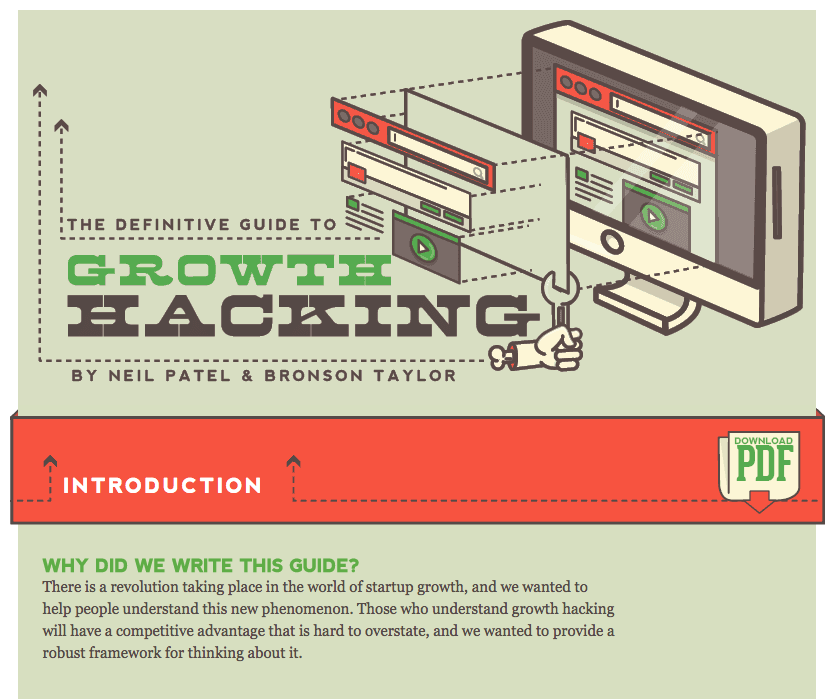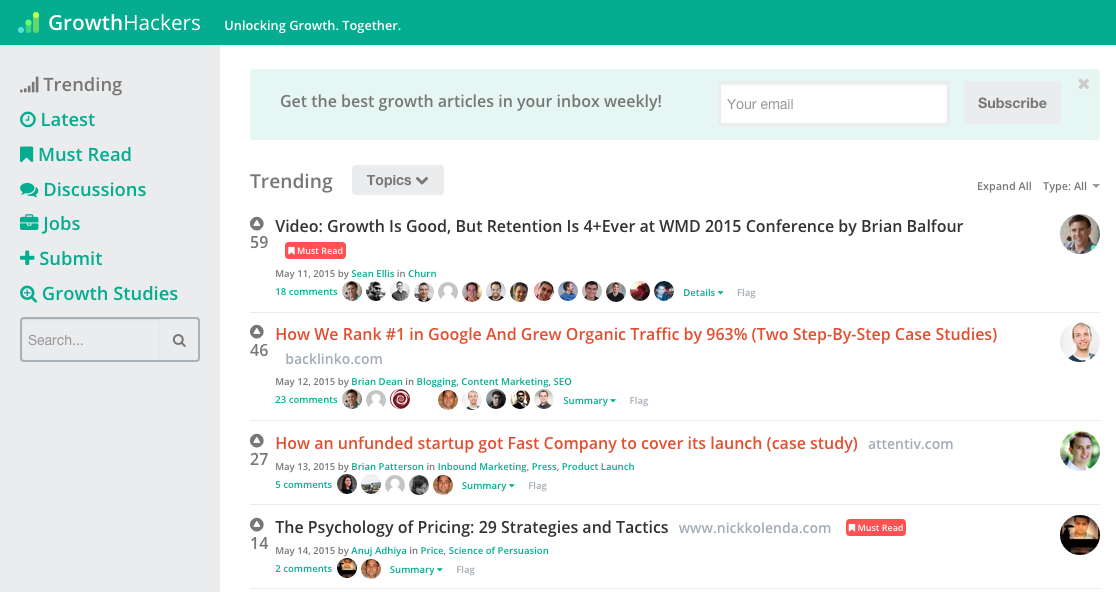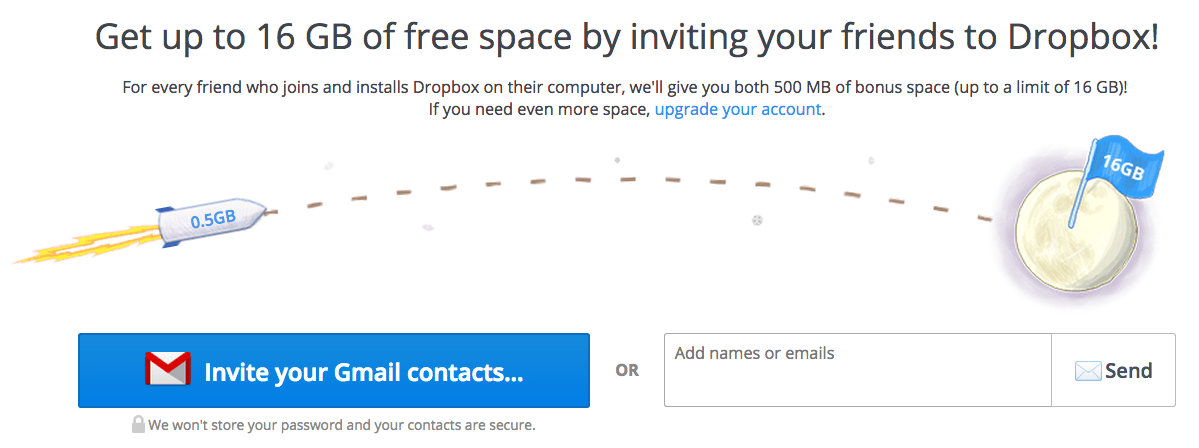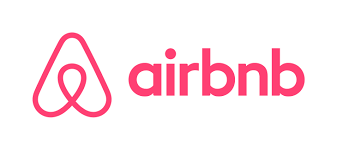
Growth Hacking 101: What It Is and How to Do It
The term “growth hacking” is thrown around a lot these days, but what does it actually mean?
Let’s dig in and find out! We’ll start with a basic definition of growth hacking – what the heck is it?
What Is Growth Hacking?
Growth hacking concerns outside-the-box marketing strategies used to get the maximum number of users with minimal spend. It’s substituting billboards and TV ads for unconventional thinking and user psychology.
Growth hackers think up non-traditional solutions to gaining new users. The keyword is growth, and oftentimes growth hackers are hunting as much growth traction as they can get their hands on, even if solutions are only temporary.
Startups are the main followers of growth hacking. They are forced into innovative marketing techniques since tight budgets prevent traditional practices. Growth hackers deal in a wide range of areas including SEO, content marketing, social media, and email marketing.
Growth hackers experiment, test, and are always pushing limits with unconventional acquisition strategies. Growth hackers are often dancing with the devil, frolicking in grey hat territory where more established companies tend not to wander. They aren’t afraid to work around the system, hence the title “hacker.”
Breakin’ rules
Growth hackers are similar to marketers, but also inherently different. There’s a single-mindedness and desperation to growth hackers as they focus solely on growth, no matter what the means.
Growth Hacking Marketing Resources: What You Gotta Know
So you’re ready to be a growth hacker?
Here are some resources to make you a growth hacking pro.
QuickSprout’s Definitive Guide to Growth Hacking. This stylish infographic guide from QuickSprout tells you everything you need to know about growth hacking, including the growth hacking funnel, push and pull tactics, and how to retain your hard-earned users.
Growth Hacker TV. Growth hacker TV, whose slogan is “because hustlers don’t watch cable,” is a great growth hacking resource for those who prefer learning through video content. The Growth Hacker TV series is actually a compilation of interviews, with each episode spotlighting an entrepreneur or industry expert who has used growth hacking techniques to achieve success.
There’s also a community board and a “recipes” section that delivers tried and true growth-boosting strategies. Lots of good stuff here!
Grow Hack. Grow Hack is another great site for those aspiring to be pro growth hackers. There are plenty of helpful, in-depth blog posts along with case studies. Growth Hack even offers Growth Coaching and User Growth Bootcamp for those who are interested in committing to upping their game.
Udemy. If video courses are more your style, there are dozens of growth hacking video courses through Udemy, ranging from $25-$300.
Growth Hackers.com. Growth Hackers is a community user-based submission site that is focuses on the topic of growth hacking. Users submit articles and blog posts that relate to growth hacking, and other users upvote the most valuable articles to the top.
Check in regularly with Growth Hackers to keep tabs on the hottest growth hacking news!
Growth Hacking Examples
Dropbox is often cited as a classic example of how to utilize growth hacking. Instead of spending big bucks on advertising, Dropbox thought up an entirely new and ingenious way to get more users.
Dropbox, a cloud storage service, started offering extra storage space to existing users who refer friends. Their referrals shot through the roof, and they barely had to work for it.
Dropbox shows that a little unconventional brainstorming can lead to some pretty remarkable growth.
Another great example of growth hacking comes from Airbnb.
Airbnb realized they could get a ton of property views by utilizing Craigslist, so they added a “Post to Craigslist” feature in their listing options menu.
This was short lived, as Craigslist eventually pulled the plug, but that temporary growth hack gave Airbnb the boost they needed to eventually become the powerful hotel-crushing business they are today!
14 Effective Growth Hacking Techniques
1. Automate like no one’s business. Automation and repetition are key to growth hacking success. Use software and tools to help you do your job faster. See what works and then streamline it.
2. Double-sided referrals. Provide referrals that benefit both parties (the individual doing the referring and the individual being referred).
3. Abandoned cart emails. If you run an ecommerce business, consider setting up emails to send to users who abandon their shopping cart. Users don’t finish checking out for a variety of reasons, including simple distraction. These cart reminder emails are great for getting shoppers back in line – in fact, a study by Salecycle shows that nearly 50% of abandoned cart emails are opened, with one third of clicks resulting in a purchase!
4. Free for bloggers. Bloggers are a great source of product reviews (and backlinks) to your site. Make it easy for bloggers to try out your product or service by including a “free for bloggers” option within your pricing page. (Alternatively, you could do “Are you a blogger doing a review? Contact us” or something similar.) Get the blogger’s email and see if they are an appropriate blog to work with. Then email them all the info and graphics they need to create a hit blog post, making their life that much easier.
In a similar vein, be sure to reach out to bloggers in your industry and court them for a review. Not everyone will say yes, but some certainly will.
5. Get niche with social sharing. Naturally you want to share your content online, and you’ll toss your post to the usual social media gauntlets like Facebook and Twitter. However, there’s so much more you can do.
Find a narrow subreddit related to your topic (there’s a subreddit on every subject under the sun) and post there, rather than to larger, more general subreddits. Also share your stuff on Quora, forums, and in the comments of other blogs (so long as what you’re sharing is relevant to the discussion).
6. Test everything. Testing is the best way to carve away at your site until it’s a sleek, efficient, and high-performing piece of perfection. Test anything and everything!
7. User-generated content contests. Host a photography or video contest asking customers to show why they love your product or service. Not only do contests get a lot of attention, but that valuable user-generated content can be utilized elsewhere in form of testimonials or for re-sharing across social sites.
8. Not your grandma’s content. Craft interesting, above-the-rest videos and mega-guides so you’re offering truly awesome content. Remember free tools count as content too! And they can get people interested in your paid offering.
9. Be a personality. Sometimes it pays to be an odd duck. Embarking on outrageous and unusual PR and marketing campaigns can get news sites interested. If multiple news outlets write up a piece covering your business (even if it’s for being ‘out there’), you’ve won.
10. Make the most of your data. Your data is a valuable weapon, but if left unsharpened, it can’t do much good. Make sure you are utilizing your data and filtering it to siphon out the insight you need (whether you’re talking demographics, content, site activity, etc).
11. Fake it till you make it. You have to dress for the job, even if the suit is 3x too big! Many sites that rely on user-generated content have a hard time getting off the ground. After all, no one wants to hang out in a graveyard. If necessary, don’t be afraid to even up the odds a bit by seeding supply (aka, create artificial content). When Reddit first began, they had to create fake user accounts to generate interest. You might benefit doing something similar.
12. PPC. Pay-per-click marketing is not just a great method for driving conversions, but also can be used to validate ideas, test wording, and learn what language customers are attracted to. Even startups with a tight budget should consider sparing $100-$200 on PPC simply to test and validate different ad concepts.
13. Remarketing. Remarketing is powerful stuff – get it on your side! Not only does remarketing (showing ads to people who have already visited your site) boast nice conversion rates, but it also does a lot to build your brand. The more users see your company on their favorite blogs, the more you stick in their minds. Suddenly you’re not a nameless nobody. Users may even see you as more trustworthy and established.
14. Swing your partner. Partnering up with complementary businesses is another sweet growth hacking technique to expand your audience. Host a partner webinar, run a joint contest, offer unique promotions to the partner customers, and you’ll be reaching a whole new audience without breaking a sweat.
A big thanks is owed to Piktochart and Yong Fook, who inspired some of these growth hacking tips.
Good luck with growth-hacking – now have at it!
















Comments
Please read our Comment Policy before commenting.